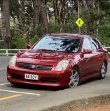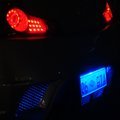V37 Hybrid stuff: Low Speed
Announcements
-
Similar Content
-
Latest Posts
-
Yes, ther are plenty of [racist statement alert] terrifying 50+ yr old ladies of a certain ethnic origin who have no demerits yet still manage to park their cars on top of roundabouts, hanging out of multistory car parking structures and other wild shenanigans. Somehow they puddle through years of driving without ever attracting the attention of the cops, yet the whole time, they are an instant away from doing something spectactularly stupid.
-
GU dashes are also know, especially on the tach, to have issues with one of the caps and another module for the power supply, and it will cause tacho to drop, also happens on the odo/Speedo too. It's why you never trust a GU patrols Odo, as when the Speedo drops out, the odo stops counting too...
-
By Dose Pipe Sutututu · Posted
There's often an inverse relationship between having no demerit points and actual driving skill. Drivers with stacks of demerit points, sometimes on the edge of losing their licence ironically tend to have better car control when things go sideways. (based purely on broscience and data made up). -
By Dose Pipe Sutututu · Posted
it's exactly the same sounds like you have either a faulty tacho OR issues with wiring -
Hello First, I apologize if this is not the correct forum. Let me know and I will move it to the correct one. I'm having a problem with the tachometer on my Skyline R33 with an RB25DET Neo engine. I'll tell you from the beginning. I'll tell you from the beginning. I have the RB25DET Neo engine installed in a Nissan Patrol GU, with a Link G4X control unit specifically for that engine, and I have fitted a Skyline R33 tachograph to the original GU dashboard, but it doesn't work properly. I have the tachometer connected to the positive and negative terminals of the GU panel's wiring, and the signal cable is connected directly to the ECU output pin, but the rpm fluctuates widely. Can anyone tell me if the output signal from an R33 ECU is the same as the output signal from an R34 ECU, or if the voltage and signal type are different? Regards and thanks.
-






Recommended Posts
Create an account or sign in to comment
You need to be a member in order to leave a comment
Create an account
Sign up for a new account in our community. It's easy!
Register a new accountSign in
Already have an account? Sign in here.
Sign In Now